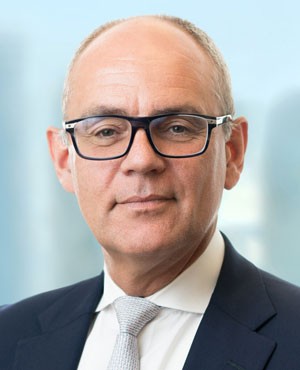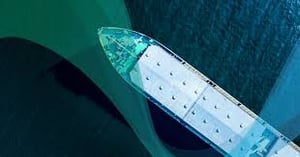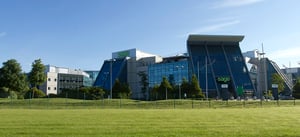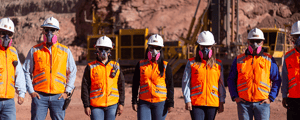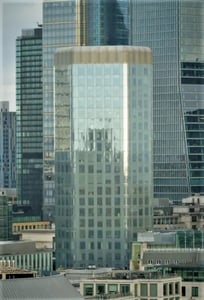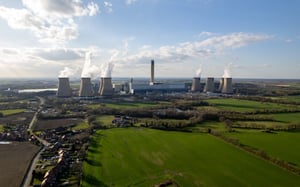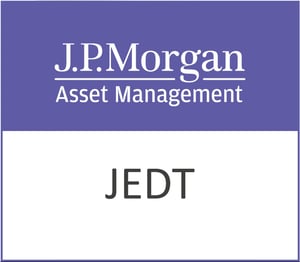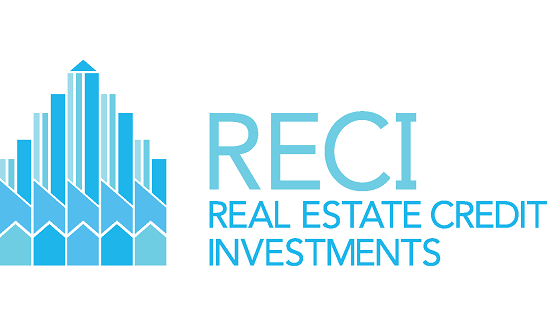Severn Trent plc (LON:SVT) has announced its results for the year to 31 March 2024
| · | Invested £1.2bn in FY24, a 63% increase year-on-year, bringing the total invested this AMP1 to over £3bn and putting us on the right run rate for AMP8 capital delivery. |
| · | Highly confident we have achieved 4* EPA2 in 2023, an unprecedented fifth consecutive year of achieving the highest environmental rating. |
| · | Accelerating investment in 900 storm overflows this year alone, as we work to reduce average spill rate to below 20 by 2025, and halve our rate by 2030. |
| · | Our share of RNAGS3 now 14%, and Get River Positive programme driving long-term improvement in river quality; confident that we will be below 10% within the year. |
| · | Net ODI4 reward of £55m this year (17/18 prices), and in total across AMP7 we expect to earn sector-leading net ODI rewards of around £420m in nominal prices.5 |
| · | Sustained investment and continuous improvement culture driven best ever performance on supply interruptions, blockages and low pressure. |
| · | Achieved lowest ever leakage this year, meaning we have now reduced leakage on our network by 10.8% in AMP7, and remain on track for a 15% reduction by the end of the AMP. |
Strong operational and financial performance delivering cumulative AMP7 RoRE6 of 8.1%
| · | Strong adjusted EPS7 growth of 36% to 79.4p (basic EPS: 51.0p) after accounting for additional 46.5m shares issued in October 2023, including PBIT8 of £512m and net finance costs of £282m (down 22%). |
| · | Shadow regulated gearing9 of 59.7%, supporting future investment; reduces to 58.7% after including the estimated impact of midnight adjustments earned to date. |
| · | Added £1bn to our nominal RCV10 this year, with AMP7 nominal RCV expected to grow by around 40% across five years. |
| · | Record energy generation of 655GWh, the equivalent of 60% of our energy consumption, following acquisition of Andigestion. |
| · | Proposed final ordinary dividend per share of 70.1p, in line with our policy and payable on 17 July 2024. |
Important strategic decisions taken, setting us up for long-term growth and success
| · | Ambitious PR2411 plan which comprehensively addresses Ofwat’s three key tests of financeability, deliverability, and affordability. |
| · | Successful £1bn equity raise, enabling us to accelerate £450m of AMP8 investment into AMP7. |
| · | Progressed our AMP8 strategic investments, with our ODI Centre of Excellence and Zero Spills Hub enabling an early start on AMP8 ODIs, ‘Plug and Play’ capabilities expanding to deliver AMP8 capital programme faster, first 20,000 customers migrated onto new customer platform, Kraken, and insourced around 400 colleagues into our customer Waste Network Team. |
Liv Garfield, Chief Executive, Severn Trent Plc, said:
“I’m proud of the performance our brilliant teams have delivered this year, whether for our customers, the environment or the wider region. We have achieved our best ever leakage performance and we’re very confident of keeping the highest 4* status from the Environment Agency for an unprecedented fifth consecutive year. We’re also driving innovation across our sector, with new technology at our Strongford treatment works eliminating all of the site’s carbon emissions.
“The extra £1bn we raised from our investors will help us continue to transform the network, reducing spills, improving river health and providing our customers with the best and most reliable service. Following extensive work to test and trial solutions, just last week we unveiled plans to deliver storm overflow solutions across 900 locations in the Midlands this year, and a dedicated 300-strong team are now installing c. 1,000 capital schemes which, once finished, will see a reduction of 20% of spills per year.
“We are planning record levels of investment in the coming years, while also keeping bills the second lowest in the country. Our customers and the communities in which they live are at the heart of our business and we’re doing more than ever to ensure we have a positive economic, environmental and social impact across our region.”
| Group Results | 2024 | 2023 |
| Group turnover | £2,338.2m | £2,165.1m |
| Group PBIT | £511.8m | £508.8m |
| Profit for the year | £140.2m | £132.2m |
| Adjusted profit for the year12 | £218.2m | £146.0m |
| Adjusted basic EPS | 79.4p | 58.2p |
| Basic EPS | 51.0p | 52.7p |
| Net ODI reward | £55m | £53m |
| Capital Investment | £1,199.7m | £ 737.1m |
| Shadow regulated gearing | 59.7% | 59.8% |
Footnotes to page 1 of this RNS
1. AMP: Asset Management Plan (see glossary); AMP7 refers to the period 1 April 2020 to 31 March 2025, and AMP8 refers to the period 1 April 2025 to 31 March 2030.
2. EPA: Environmental Performance Assessment (‘EPA’) is a calendar year measure which is expected to be confirmed by the Environment Agency (‘EA’) in July 2024.
3. RNAGS: The EA’s analysis of Reasons for Not Achieving Good Status (‘RNAGS’) records the source, activity and sector involved in causing waters to be at less than ‘good’ status.
4. ODI: Outcome Delivery Incentives (see glossary), quoted pre-tax and in 2017/18 prices unless otherwise stated. FY24 ODIs include in-year reward earnings of £35 million and £20 million for work and milestones already delivered in relation to end of AMP ODIs.
5. Calculated based on prices in the year in which the ODIs earned have been, or are expected to be, recognised in revenue.
6. RoRE: Return on Regulatory Equity (see glossary).
7. EPS: Earnings Per Share; Adjusted basic EPS is set out in note 10.
8. PBIT: Profit Before Interest and Tax.
9. Shadow regulated gearing is based on shadow RCV which includes our Green Recovery programme. Regulated gearing on our FD RCV is 61.3%.
10. RCV: Regulatory Capital Value (see glossary), £1 billion added to nominal RCV includes estimated midnight adjustments accrued to date.
11. PR24: Price Review 2024 (see glossary).
12. Adjusted profit for the year is set out in note 10.
Note: FY2024/25 technical guidance is included in the Chief Financial Officer’s section of this announcement.
Preliminary Results Presentation and Webcast
A presentation of these results hosted by Liv Garfield, CEO, and Helen Miles, CFO, will be available on our website (www.severntrent.com) from 7.00am BST today, 22 May 2024.
We will be hosting a live Q&A session with Liv, Helen and our wider Executive Team at 8:30am BST today via video call which you can register for through our website.
Chief Executive’s Review
This year, our industry has been in the spotlight like never before. Our customers have greater expectations than ever and we hold ourselves to ever higher standards of operational and environmental performance, while at the same time the changing climate heightens the challenge on our operations. Our region had 35% more rainfall in 2023 than in the previous year, and experienced ten named storms between September and March, with close to 30% of rivers in our region reaching their highest recorded levels this financial year.
Despite these conditions, we have continued to deliver against our customer measures, including our best ever performance on leakage, blockages, and supply interruptions. We have delivered our largest ever capital programme, with a record £1.2 billion invested this year to continue improving performance levels. And we are also highly confident we have achieved the highest possible four-star EPA rating from the Environment Agency (‘EA’) for the fifth consecutive year for 2023.
Storm overflows remain a priority for our customers and wider stakeholders, and this year has highlighted that we need to go further, move quicker, and find more creative and innovative solutions to meet these expectations. This year alone we will invest £450 million across 900 overflows – around a third of our total – to bring our average number of spills below 20 by 2025. We are committed to moving as quickly as possible, going further than is required, to resolve the issue.
Our total capital investment so far in AMP7 is over £3 billion, adding important resilience to our network and translating into continued success on ODIs; we expect to earn net ODI rewards of around £420 million (nominal prices) over the course of AMP7. And our sustained investment, including our substantial Green Recovery programme, means our RCV is set to grow in nominal terms by around 40% this AMP, before accounting for £450 million of AMP8 transition expenditure.
As we look ahead to AMP8, we’re transforming our business to sustain this high performance in a period of greater investment and growth. The five strategic investment decisions we’re making for AMP8, which we unveiled at our last Capital Markets Day, are all progressing at pace:
| · | our Zero Spills Hub is now operational, trialling innovations and creating bespoke plans for each storm overflow as we aim to halve our usage of overflows by 2030; |
| · | we’ve insourced around 400 additional roles this year, giving greater control over performance in our Waste Networks Team; |
| · | our ODI Centre of Excellence, a newly-assembled team of analytical specialists working alongside our operational teams, are focused on maintaining our sector-leading record of outperformance into AMP8; |
| · | our ‘Plug and Play’ asset delivery catalogue is expanding, and is set to revolutionise our capital programme – saving time as we deliver our largest ever programme of investment in AMP8; and |
| · | we have already successfully migrated over 20,000 customers to Kraken, a world class Customer Information System, which will enable us to unlock data from our smart meters to drive performance on per capita consumption and leakage, while transforming the billing service we give to our customers. |
Continued strength in water
This year we have built on our success in our water business, with year-on-year improvements on a large number of key measures. Targeted investment across a range of capital schemes has led to our best ever year on persistent low pressure, and our in-year performance for per capita consumption was also our best ever. Meanwhile, Severn Trent delivered record performance on supply interruptions this year, supported by our expanded in-house Network Response Team proactively addressing issues on our network to reduce disruptions, while Hafren Dyfrdwy also achieved their best supply interruptions performance this AMP.
The long-term investments we have made over recent years have enabled us to push further on operational performance. We completed around 50% more leakage jobs on our water network this year compared to the first year of AMP7, driving leakage to its lowest ever levels. AMP to date we have reduced leakage by 10.8% and we have hit our leakage reduction target for six consecutive years. We’re targeting a 15% reduction in leakage over the course of AMP7, and a 16% reduction in AMP8 – among the most ambitious targets in the sector.
To continue our trajectory of performance gains, we’re embracing a smart network. We’re expanding our smart metering programme, rolling out over 400,000 smart meters by the end of AMP7, and more than a million by the end of AMP8. This will allow for more rapid identification of leaks, while also linking into our new customer platform, Kraken, enabling customers to better manage their consumption.
Furthermore, we’re looking to utilise fully this smart network to reduce household demand for water. In partnership with Nectar, we have been awarded a grant from the Ofwat Innovation Fund to utilise our smart meters to unlock Nectar points for our customers. While reward schemes typically incentivise additional consumption, our trial will instead incentivise reduction – customers will earn Nectar points for water efficient behaviour, as well as benefitting from lower water and energy bills.
While we were green on the vast majority of our water ODIs, we missed our target on CRI this year. To improve performance, we’re investing in new, innovative water treatment technologies at key sites, including our biggest ever ultraviolet disinfection scheme at Strensham.
Investing in wastewater operations for long-term success
We continue to demonstrate operational leadership in wastewater. Each year since 2019 we have been awarded the highest possible four-star EPA rating by the EA for our environmental performance, and are very confident that we have once again achieved four-star performance for 2023. We also experienced no serious pollution incidents in the year, defined by the EA as any pollution event which could have a significant impact on the environment.
Adopting the approach from our water operations towards dry weather, we’ve developed ‘storm readiness’ plans to anticipate issues before they arise and respond more quickly when major storms create challenges for our network. At the same time, our Get River Positive pledges are progressing strongly, our share of RNAGS is now 14% and we’re working hard to get to under 10% this year.
We have achieved our best ever performance on blockages, a key cause of sewer flooding. Despite this strong performance, the increase in hydraulic flooding year-on-year has contributed to us missing our external sewer flooding target again this year. We are consistently the best operator in the sector on external sewer flooding, but with stretching targets well beyond performance levels any company has ever achieved, we have incurred a significant ODI penalty on this measure, which is included in our net ODI reward for the year.
We have been hard at work introducing interventions to limit spills on our storm overflows, and our transition expenditure has enabled us to accelerate investment across our 900 highest priority overflows to reduce our average spill numbers to below 20 by 2025. This involves increasing storage capacity for storm water at large and small treatment works, adding nature-based treatment, and expanding our treatment capacity, to improve these sites by the end of the year. By storing more water, increasing our treatment capacity, and protecting our network, we believe we can substantially reduce our usage of storm overflows.
During the year, Severn Trent Water Limited was fined £2 million for a pollution that occurred at our wastewater treatment works at Barlaston in 2020. Our operational failings at the site led to a risk of environmental harm, which is unacceptable. We reported the event to the EA at the first opportunity and worked transparently with the EA throughout their investigation, delivering a number of improvements to prevent issues of this kind occurring in the future.
Environmental leaders with ambitious future plans
As the impacts of climate change have become increasingly evident over recent years, our role as stewards of our local environment has never been more important. One year ago, we doubled our ambition of improving biodiversity on 5,000 hectares of land by 2025, and this year have now surpassed that upgraded target, having now improved more than 11,000 hectares of land. This means our work on biodiversity alone now accounts for more than 2% of the government’s 2042 Nature Recovery Network target for the entire country.
We are progressing well on our Triple Carbon Pledge that by 2030 we will achieve Net Zero carbon emissions, 100% of our energy will come from renewable sources, and our vehicle fleet will be 100% electric, subject to the availability of specialist vehicles. This year, we incorporated Light Commercial Vehicles into our fleet, meaning that around a quarter of our fleet is now electric. And on scope three, 58% of our supply chain by emissions have now committed to science-based targets.
Since 2020, all of our electricity has either been self-generated or purchased from renewable sources. This year saw our best ever self-generation output with combined generation across our Bioresources and Green Power business of 655GWh, equivalent to 60% of our Group consumption. Following seven months of ownership of Andigestion, we are confident that we will outperform our base valuation and we have identified multiple further opportunities within the business to increase generation further. We have also completed extensive upgrades at our Anaerobic Digestion site in Derby this year to enhance its generation capacity.
Following a £40 million investment that was supported by Ofwat’s Innovation Fund new technology has been installed at our facility at Strongford to eliminate all of the site’s carbon emissions. In the coming months we will be hosting a summit to share the technologies and practices which have reduced and removed process emissions from the site. Our Net Zero Hub, based on the same site, will use this blueprint to apply low emission interventions across our estate in AMP8, as we progress towards operational Net Zero by 2030.
Capital programme scaled up to deliver efficient growth
This year we invested a record £1.2 billion upgrading our network and transforming our business for the years ahead. The 63% year-on-year increase in capital spend brings us in line with our capital investment requirements for the start of AMP8, and reflects an expansion of our capital work to meet AMP7 regulatory commitments alongside the planned step up of our Green Recovery programme.
During the year we invested around £129 million on significant upgrades across seven major treatment works, increasing capacity, enhancing process efficiency, and improving the quality of effluent by reducing phosphorus and ammonia levels. In our waste network, we’ve completed a rising main and town centre surface separation works as part of our flooding alleviation project in Stroud, a £25 million upgrade to protect homes and businesses from flooding while also preventing 30 storm overflow spills per year.
Our Green Recovery programme, for which we were awarded 71% of all the funding awarded to the industry, continues at pace. We have deployed a series of groundbreaking floating wetlands, which pre-treat raw water, ahead of schedule, reducing our usage of chemicals while improving local biodiversity. At our Bathing Rivers, our designs for innovative new ozone treatment are progressing well, and we are on track to deliver against our March 2025 target. And in Mansfield we have facilitated c. 5,000 cubic metres of surface water storage through our sustainable interventions as we create the first catchment-scale flood-resilient community in the UK.
This record year of capital investment brings us to over £3 billion cumulatively in AMP7, contributing to expected nominal RCV growth of around 40% across AMP7. With the sizeable step up in capital requirements next AMP, we expect our RCV to double between 2020 and 2030 based on our Business Plan, and we will deliver this growth more efficiently than ever. Our strategic decision in AMP6 to insource our design team has allowed us to drive far greater standardisation of specialist equipment which historically has always required bespoke solutions. The ongoing expansion of our ‘Plug and Play’ catalogue focusing on our most common asset types, including chemical dosing rigs and storage tanks, will allow for safer, faster, and easier production and installation of our assets going forward.
We are accelerating £450 million of investment from AMP8 into AMP7 to generate benefits for customers sooner. That includes significant spend to reduce storm overflow spills, deliver our WINEP commitments, and accelerate our rollout of smart meters. A large part of the early design and feasibility work on the transition spend has been completed this year, enabling delivery in the final year of AMP7, further ensuring a smooth capital glide path into a period of sustained higher investment.
Embracing our responsibilities to the customers and communities we serve
Our customers have been clear that they want additional investment to support an enhanced service. But while we are committed to investing at record levels, we want to ensure that no one is unable to afford their bills. We are currently supporting over 6% of customers through a range of support measures, and in AMP8 we are doubling our affordability support to £550 million over the course of the AMP, more than enough to cover everyone in our region forecasted to be in water poverty by 2030.
We’re making great strides in the ten-year Societal Strategy we announced in 2022, supporting 100,000 people out of poverty by helping to address its underlying causes. Our ‘Big Boost for Brum and Derby’ career events targeting social mobility cold spots were attended by over 1,600 participants, providing unique opportunities to attend free employability workshops and connect with some of the cities’ biggest employers, and we launched our new partnership with Trailblazers to support prison leavers into work.
More broadly in our region, we remain on track to give back £10 million to our communities in AMP7 through our Community Fund. Since 2020, we have made awards of more than £8 million to support new projects by local charities and community groups, in addition to the £1.6 million awarded in 2020 to help our communities deal with the impact of the pandemic. In the last year our Community Fund has helped over 100 organisations, supporting more than 300,000 people.
While we’re investing in continued service improvements, now and in the future, we also want to deliver world class customer experience. We have seen promising improvements to our Trust Pilot scores over recent months, and are now rated as ‘excellent’ with a score of 4.7 out of five, but our disappointing C-MeX score indicates we need to go further. Migration of our customer platforms to Kraken is underway, utilising smart technology to free up our agents’ time to focus on generating good customer outcomes, and we’re encouraging a more regional approach to customer service through the launch of our internal County Cup, getting the full workforce involved in improving the service our customers receive.
Fostering a culture to deliver the opportunities ahead
As we approach AMP8, our forecasted performance levels remain comparatively strong and the move away from bespoke ODIs towards a more ‘common’ ODI regime in AMP8, where we expect relative performance to be more important, gives us confidence that we are well-positioned to outperform. Based on Business Plan information submitted to our economic regulator in October, our forecasted performance is around the upper quartile level on 72% of ODI measures in 2030.
The culture and talent we have cultivated is central to our ability to deliver these ambitious service improvements. This year we’ve achieved Race Equality Matters Bronze Trailblazer status and ranked eighth on the Social Mobility Employer Index, and we are proud to have achieved a fifth consecutive year of our best ever safety performance. 72% of our employees now participate in our Sharesave scheme, with 25% of participants saving the maximum £500 per month, with this alignment of employee and company interests contributing to our best ever employee engagement score of 8.6 out of ten, placing within the top 3% of utilities globally.
The investment we made to build a dedicated training Academy continues to pay off, facilitating talent progression and upskilling. Our Academy syllabus now contains over 600 training interventions, including the launch this year of our first water treatment apprenticeships, and at its first Ofsted inspection we received a Good rating overall, with an Outstanding rating for personal development.
This also allows us to prepare our employees for the jobs of the future, nurturing an innovative culture to deal with challenges creatively and effectively. To support this, we have enabled everyone in our company to have safe access to AI, giving them a helping hand to work more efficiently and effectively.
Our whole company is prepared for the journey ahead. The substantial investments we have made in recent years put us in an excellent position to grow at scale while maintaining operational leadership, and we’ve made the key strategic decisions we needed to make to generate value in the years to come.
Chief Financial Officer’s Review
We have delivered robust financial performance in the year, in line with expectations. PBIT of £511.8 million (2022/23: £508.8 million) was in line with the previous year, and with lower finance costs, due mainly to lower inflation on index-linked debt, profit before tax was 19.9% higher at £201.3 million.
A summary of our financial performance for the year is set out below:
| 2024 | 2023 | Change | |||
| £m | £m | £m | % | ||
| Turnover | 2,338.2 | 2,165.1 | 173.1 | 8.0 | |
| PBIT | 511.8 | 508.8 | 3.0 | 0.6 | |
| Net finance costs | (281.5) | (362.6) | 81.1 | 22.4 | |
| Gains/losses on financial instruments, share of results of joint venture and impairment of loans receivable | (29.0) | 21.7 | (50.7) | (233.6) | |
| Profit before tax | 201.3 | 167.9 | 33.4 | 19.9 | |
| Tax | (61.1) | (35.7) | (25.4) | (71.1) | |
| Profit for the year | 140.2 | 132.2 | 8.0 | 6.1 | |
Group turnover was £2,338.2 million (2022/23: £2,165.1 million) up £173.1 million (8.0%), driven mainly by higher revenues in our Regulated Water and Wastewater business (up £156.6 million).
Group PBIT was broadly in line with the previous year, up £3.0 million to £511.8 million. In Regulated Water and Wastewater PBIT grew by £12.1 million, partially offset by lower PBIT in Business Services. The segmental performance is set out in more detail below.
Net finance costs were lower as falling inflation in the period reduced the cost of our index-linked debt. Our effective interest cost was 150 bps lower at 4.7% (2022/23: 6.2%); our effective cash cost of interest, (which excludes the inflation uplift on index-linked debt) increased to 3.2% (2022/23: 3.0%).
The tax charge of £61.1 million reflects our full (including current and deferred tax) effective tax rate this year of 30.4% (2022/23: 21.3%). This is higher than the statutory rate of tax of 25% (2022/23: 19%) due to true ups for prior year provisions, which increased the effective rate by 3.7% and depreciation on non-qualifying assets and other permanent differences which increased the effective rate by 1.7%. During the year, full expensing of qualifying capital expenditure replaced the super deduction, which in the previous two years had given a 130% tax allowance. The significant allowances derived from this resulted in our current tax charge, excluding true ups for prior year provisions, of £0.5 million and our adjusted effective tax rate of 0.2% (2022/23: nil). As a result of the enhancements to the capital allowances regime in recent years, the Group has losses carried forward of £871 million that are available to set-off against future taxable profits.
Group profit after tax was £140.2 million (2022/23: £132.2 million) and our adjusted basic EPS was 79.4 pence (2022/23: 58.2 pence) reflecting the increase in adjusted earnings partially offset by the increase in the number of shares from the equity placing in October 2023. Basic EPS was 51.0 pence (2022/23: 52.7 pence).
Our balance sheet remains strong. At 31 March 2024 our adjusted net debt was £7,187.9 million (2023: £7,123.9 million based on our revised definition – see note 17). Our shadow regulated gearing, taking into account our Green Recovery programme, was 59.7% (2023: 59.8%) and our regulated gearing using FD RCV was 61.3% (2023: 60.5%). This was higher due to investments in relation to Green Recovery, transitional expenditure and other items that will be reflected in the RCV as ‘midnight adjustments’ at the end of the AMP.
Our net pension deficit on an IAS 19 basis is £213.0 million (2023: £279.4 million). The discount rate, which is based on the yield observed on high quality corporate bonds, increased by 10 basis points and inflation expectations over the life of the liabilities decreased by 10 basis points which combined, reduced the deficit by £53 million. We also paid contributions of £68 million, in line with our funding plan. This was partially offset by other actuarial adjustments of £37 million, service and administration costs of £5 million and £13 million from unwinding of the discount on the opening deficit.
Operational cash flow was £760.8 million, (2022/23: £713.1 million). EBITDA increased by £14.0 million and pension contributions were £32.6 million lower as in the previous year we paid two years’ deficit reduction contributions in the year. Cash capex was £1,146.2 million, up £459.6 million due to the increasing capital programme including transitional expenditure for AMP8. After the net receipt of £1 billion from the issue of shares, net cash inflow before changes in adjusted net debt was £64.9 million (2022/23: outflow of £440.4 million).
Severn Trent Water’s RoRE for the year was 5.7%, 180 bps above the base return of 3.9% and bringing our cumulative RoRE for the AMP to 8.1%. Outperformance came mainly from our customer ODI rewards of £55 million, with 76% of our measures in reward, and financing, reflecting our continued low cash interest cost and the impact of higher inflation in the year compared to Ofwat’s assumption in the Final Determination.
Although in the current year we have continued to see an adverse impact from higher inflation on our operating and finance costs, in the longer term we expect to see the benefits through indexation of our RCV, revenue growth and lower gearing, all of which underpin our inflation-linked AMP7 dividend policy.
Our proposed final dividend of 70.10 pence (2022/23: 64.09 pence), is in line with our inflation-linked dividend policy and payable on 17 July 2024.
Regulated Water and Wastewater
Turnover for our Regulated Water and Wastewater business was £2,152.0 million (2022/23: £1,995.4 million) and PBIT was £479.6 million (2022/23: £467.5 million).
| 2024 | 2023 | Change | ||
| £m | £m | £m | % | |
| Turnover | 2,152.0 | 1,995.4 | 156.6 | 7.8 |
| Net labour costs | (200.9) | (158.2) | (42.7) | (27.0) |
| Net hired and contracted costs | (251.8) | (217.2) | (34.6) | (15.9) |
| Power | (283.0) | (204.6) | (78.4) | (38.3) |
| Bad debts | (27.3) | (24.5) | (2.8) | (11.4) |
| Other costs | (291.9) | (284.6) | (7.3) | (2.6) |
| (1,054.9) | (889.1) | (165.8) | (18.6) | |
| Infrastructure renewals expenditure | (207.2) | (238.4) | 31.2 | 13.1 |
| Depreciation | (410.3) | (400.4) | (9.9) | (2.5) |
| PBIT | 479.6 | 467.5 | 12.1 | 2.6 |
Turnover increased by £156.6 million with the main movements being:
| · | An increase of £138.6 million from the annual CPIH + K increase in prices; |
| · | A £91.7 million decrease representing the recovery of higher revenue in 2021/22 under the RFI mechanism where revenue recovered quicker than expected post Covid; |
| · | £131.4 million increase for the in-AMP fast money allowance for the Green Recovery programme and ODI reward recognised in revenue in year; |
| · | £10.4 million reduction due to lower NHH consumption and increased support given to customers as part of the Big Difference Scheme, supporting customers struggling to pay their bill; and |
| · | A net decrease of £11.3 million due to lower gas and electricity export income in Bioresources as a result of significantly lower export prices partly offset by higher renewable energy incentive income and increased tankered trade and domestic waste. |
Net labour costs of £200.9 million were 27.0% higher year-on-year. Gross employee costs increased by £80.3 million of which, £25.7 million was driven by a pay increase of 7.5% and £16.7 million was due to higher national insurance and employer pension contribution costs. A planned increase in our headcount driven by the insourcing of our reactive sewage services teams from Customer Solutions Plus earlier this year, and additional resource to support the delivery of our biggest ever capital programme, resulted in an increase of £27.7 million. This was partly offset by higher capitalisation of employee costs as expected due to the significant size of our capital programme.
Net hired and contracted costs increased by £34.6 million (15.9%), £15.8 million of which is due to the planned step-up in the Green Recovery programme. The remaining increase is driven by higher spend on third party gangs to support with leakage and other operational improvement activities and increases on building maintenance contracts and third-party technology contracts.
Power costs were £78.4 million or 38.3% higher, mainly driven by the higher wholesale price of electricity on imports, hedged over the course of 2022 which was affected by the significant increase in wholesale market energy prices at that time. Power consumption on our pumping stations was around £2 million higher due to the exceptionally wet weather. Higher power prices are partially offset by self-generation and incentive income in both our Bioresources and Green Power businesses.
Bad debt charges increased by £2.8 million and represented 1.5% of household revenue (2022/23: 1.7%) reflecting the impact of higher revenue on our bad debt cost, partly offset by improved collection performance in the latter part of the year as pressure on household incomes started to ease.
Other costs were up by £7.3 million, including higher costs of repairing third-party damage, increased insurance costs and higher regulatory fees, partly offset by lower chemical costs.
Infrastructure renewals expenditure was £31.2 million lower compared to 2022/23. This was driven by less reactive activity required as well as improved efficiency on mains renewals, partly offset by additional activity on comm pipe renewals. Our work mix switched towards more capital activity in the year.
Depreciation of £410.3 million was £9.9 million higher due to completion of Strongford THP, Minworth CHP and additional vehicle leases as we progress towards a 100% electric fleet and vehicle purchases for the insourced reactive sewage services teams.
Return on Regulatory Equity (RoRE)
RoRE is a key performance indicator for the regulated business and reflects our combined performance on totex, customer ODIs and financing compared to the base return allowed in the Final Determination.
Severn Trent Water’s RoRE for the year ended 31 March 2024 and for the four years ended on that date is set out in the following table:
| 2023/24% | AMP7 to date% | |||
| Base return | 3.9 | 3.9 | ||
| Enhanced RoRE reward1 | ‒ | 0.1 | ||
| ODI outperformance2 | 0.7 | 1.1 | ||
| Wholesale totex performance3 | (3.8) | (0.8) | ||
| Retail cost performance | ‒ | (0.2) | ||
| Financing outperformance | 4.9 | 4.0 | ||
| Return on Regulatory Equity4 | 5.7 | 8.1 |
| 1 | Fast track reward taken over the first three years of AMP7. |
| 2 | ODI performance includes PCC and forecast C-MeX and D-MeX outturn. Includes in-period ODI outperformance only. |
| 3 | Includes impact of land sales. All calculated in accordance with Ofwat guidance set out in RAG 4.12, which precludes adjustment for corporation tax. |
| 4 | Calculated in accordance with Ofwat guidance set out in RAG 4.12, which excludes Ofwat’s AMP7 tax true-up mechanism. |
We have delivered RoRE of 5.7% in the year, outperforming the base return by 1.8% as a result of:
| · | ODI outperformance of 0.7%, driven by strong performance across the majority of measures, with 76% meeting or exceeding regulatory targets; |
| · | Financing outperformance of 4.9%, driven by our AMP7 financing strategy of maintaining a low level of index-linked debt and the tax benefit of 100% capital allowances; |
| · | Partly offset by the impact of high energy costs on our totex as previously guided. |
Regulatory performance measures
In addition to RoRE we have developed further performance measures to highlight aspects of value created by the Group that are not reflected in our financial performance indicators. These are set out below.
Economic Equity Value Added
This measure gives an indication of the economic value generated by the Group over the AMP to date. The RCV, which has no equivalent under IFRS reporting, is the most significant component of this measure.
Each year Ofwat publishes the RCV for each company which sets out the RCV from the Final Determination, updated for inflation (the ‘FD RCV’). This metric does not include costs that we have incurred and that will be added to the RCV as ‘midnight adjustments’ between the end of the current AMP and the start of the next AMP. Our new RCV measure, which we refer to as our Economic RCV, includes estimates of these items along with the FD RCV for Severn Trent Water and Hafren Dyfrdwy combined.
Our Economic Equity Value Added metric measures the growth in our Economic RCV and our investment in our non-regulated business net of changes in Group adjusted net debt, pension liabilities and cash tax. We measure this over the AMP period:
| 2023/24 | AMP7 opening | Valueadded | |
| £m | £m | £m | |
| Economic RCV | 12,540 | 9,382 | 3,158 |
| Revenue earned not billed | 238 | – | 238 |
| Regulated economic value | 12,778 | 9,382 | 3,396 |
| Other Group investments | 68 | ||
| Change in adjusted net debt, pensions and tax | (963) | ||
| Retained Economic Equity Value Added | 2,501 | ||
| Cashflows (from)/to equity holders | (181) | ||
| Economic Equity Value Added AMP to date | 2,320 |
The components of the Economic RCV are shown below:
| 2023/24 | AMP7 opening | Valueadded | ||
| £m | £m | £m | ||
| FD RCV | 12,004 | 9,382 | 2,622 | |
| Green Recovery | 329 | – | 329 | |
| Real Options | 87 | – | 87 | |
| Transitional Expenditure | 47 | – | 47 | |
| Other RCV adjustments | 73 | – | 73 | |
| Economic RCV | 12,540 | 9,382 | 3,158 | |
The Green Recovery RCV represents our investment to date in the Green Recovery programme that will be recovered in future AMP periods.
Real Options are commitments that were agreed with Ofwat at PR19 to be adjusted to the RCV at the end of the AMP contingent on the delivery of environmental benefits, which are either delivered or on track.
Transitional Expenditure is investment that we have brought forward into AMP7 from AMP8 under Ofwat’s transitional expenditure mechanism but will not be included in the RCV until the start of AMP8.
Other RCV adjustments consists of ‘true ups’ that are made to the RCV at the end of the AMP under the regulatory model, including the RCV element of totex performance sharing. This adjustment is split between RCV and revenue in the regulatory model and so part of the adjustment is included here, and the remainder is included in revenue earned not billed below.
The Green Recovery adjustment is included in Ofwat’s shadow RCV measure. If we had included all of the adjustments in our Economic RCV metric, our shadow regulated would have been 58.7%.
Regulatory Income
This measure reflects income that will be recognised in IFRS financial statements in future years. IFRS financial statements do not currently reflect rights that we have earned in the period to bill additional revenue in future periods.
In addition, the inflation accretion on the principal amount of our index-linked debt is charged to finance costs in our IFRS financial statements but the inflation uplift on our RCV is not recognised under IFRS. Our regulatory income metric includes the benefit of inflation on RCV and the cost of inflation on index-linked debt for Severn Trent Water and Hafren Dyfrdwy combined.
| 2023/24 | 2022/23 | |
| £m | £m | |
| Adjusted IFRS earnings (see attached financial statements note 10) | 218 | 146 |
| Change in year of revenue earned not billed | 76 | (14) |
| RCV inflation | 526 | 1,093 |
| Total Regulatory Income | 820 | 1,225 |
The movement in revenue earned not billed in the year is set out below in its major components:
| Revenue | ODIs | Totex | True-ups | Total | |
| £m | £m | £m | £m | £m | |
| At 1 April 2023 | 13 | 159 | 38 | (48) | 162 |
| Inflation | 1 | 15 | 4 | (4) | 16 |
| Earned in year | 9 | 50 | 96 | (18) | 137 |
| Billed in year | 14 | (91) | – | – | (77) |
| Change in the year | 24 | (26) | 100 | (22) | 76 |
| At 31 March 2024 | 37 | 133 | 138 | (70) | 238 |
Revenue – this is an adjustment for the difference between revenue billed and the amount allowed in the FD. These adjustments are generally billed two years in arrears.
ODI rewards earned in a given period can be recovered through revenue after two years (or carried forward further at the Company’s choice). This is shown net of tax, in current prices.
Differences between totex spent and the amount allowed are ‘shared’ with customers in the following AMP. Part of this difference is recovered through adjustments to revenue (included here) and the remainder through adjustments to the RCV (included in Economic RCV above).
True-ups – the regulatory model includes a number of ‘true ups’ for differences from original assumptions arising through the AMP and recovered from customers in the next AMP. These true ups include tax, land sales, cost of debt and the RPI-CPIH wedge in AMP7.
Business Services
| 2024 | 2023 | Change | ||
| £m | £m | £m | % | |
| Turnover | ||||
| Operating Services and other | 104.3 | 98.5 | 5.8 | 5.9 |
| Green Power | 87.6 | 78.6 | 9.0 | 11.5 |
| 191.9 | 177.1 | 14.8 | 8.4 | |
| EBITDA | ||||
| Operating Services and other | 25.6 | 28.1 | (2.5) | (8.9) |
| Green Power | 29.5 | 35.7 | (6.2) | (17.4) |
| Property Development | 4.1 | 2.0 | 2.1 | 105.0 |
| 59.2 | 65.8 | (6.6) | (10.0) | |
Business Services turnover was £191.9 million (up 8.4%) and underlying EBITDA was £59.2 million (down 10.0%).
In our Operating Services and Other businesses, turnover increased by £5.8 million due to activity on the MoD and other Aqualytix contracts. EBITDA was £2.5 million lower as the increased revenue was offset by the impact of the 7.5% pay increase and higher technology licence costs.
In Green Power, turnover was £9.0 million higher year-on-year from increased generation, higher renewable energy incentive income and gate fees. Generation increased by 23 GWh from the Andigestion acquisition and 4 GWh due to our Derby Food Waste Plant being commissioned in the second half of the year.
Green Power EBITDA was £6.2 million lower compared to 2022/23 due to one-off Andigestion acquisition costs of £3.7 million, a pay increase of 7.5% and higher food waste and haulage costs.
EBITDA from Property Development was £4.1 million, £2.1 million higher year-on-year. Despite some delays in our 2023/24 plans, we remain on track to achieve long-term plans to deliver £150 million profit by 2032.
Corporate and other
Corporate costs were £10.5 million (2022/23: £8.7 million). The increase is driven by higher legal costs related to the Leigh Day defence as well as pay increase on corporate overheads. Our other businesses generated PBIT of £1.1 million (2022/23: £0.7 million).
Net finance costs
Net finance costs for the year were £81.1 million (22.4%) lower than the prior year at £281.5 million. Although average net debt was up 7.4% at £7,216.6 million (2022/23: £6,720.6 million), lower inflation in the year reduced the cost of our index-linked debt by £107.7 million. Our effective interest cost was 4.7% (2022/23: 6.2%).
We raised around £1.5 billion of new debt at competitive rates but higher than the embedded debt it replaced and as a result our effective cash cost of interest (excluding the RPI uplift on index-linked debt and pensions-related charges) was higher at 3.2% (2022/23: 3.0%).
Capitalised interest of £69.6 million was £13.0 million higher year-on-year, due to increased capital work in progress compared to the previous year, partially offset by the lower effective interest cost.
Our earnings before interest, tax depreciation and amortisation (EBITDA) interest cover was 3.5 times (2022/23: 2.6 times) and PBIT interest cover was 1.9 times (2022/23: 1.4 times). See note 17 for further details.
Gains/losses on financial instruments
We use financial derivatives solely to hedge risks associated with our normal business activities including:
| · | Exchange rate exposure on foreign currency borrowings; |
| · | Interest rate exposures on floating rate borrowings; |
| · | Exposures to increases in electricity prices; and |
| · | Changes in the regulatory model from RPI to CPIH. |
We hold interest rate swaps with a net notional principal of £442.9 million floating to fixed, and cross currency swaps with a sterling principal of £674.6 million, which economically act to fix the sterling liability on certain foreign currency borrowings.
We revalue the derivatives at each balance sheet date and take the changes in value to the income statement, unless the derivative is part of a cash flow hedge.
Where hedge accounting is not applied, if the risk being hedged does not impact the income statement in the same period as the change in value of the derivative, then an accounting mismatch arises and there is a net charge or credit to the income statement. During the year there was a loss of £9.0 million (2022/23: gain of £35.7 million) in relation to these instruments.
Note 6 to the financial statements gives an analysis of the amounts charged to the income statement in relation to financial instruments.
As part of our power cost management strategy, we have fixed the wholesale price for around 100% of our estimated net energy usage for 2024/25, and around 43% for 2025/26, through physical hedges with suppliers and natural hedges from the export of self-generated energy.
Share of loss of joint venture
Water Plus incurred a loss after tax of £8.1 million, mainly due to increased bad debt charges and higher interest rates. Our share of Water Plus’s result for the year was a loss of £4.1 million (2022/23: £-).
Taxation
We are committed to paying the right amount of tax at the right time, and were pleased to be awarded the Fair Tax Mark for the fifth successive year. We pay a range of taxes, including business rates, employer’s national insurance and environmental taxes such as the Climate Change Levy as well as the corporation tax shown in our tax charge in the income statement.
| 2024 | 2023 | ||
| £m | £m | ||
| Tax incurred: | |||
| Corporation tax | 0.5 | – | |
| Business rates and property taxes | 90.4 | 84.4 | |
| Employer’s National Insurance | 39.2 | 35.3 | |
| Environmental taxes | 6.6 | 6.6 | |
| Other taxes | 6.7 | 6.0 | |
| 143.4 | 132.3 |
Further details on the taxes and levies that we pay can be found in our report “Explaining our Tax Contribution 2023/24”, which will be made available at sustainability-strategy/reports-and-publications/tax/">www.severntrent.com/sustainability-strategy/reports-and-publications/tax/ when our Annual Report and Accounts is published in June.
The corporation tax charge for the year recorded in the income statement was £61.1 million (2022/23: £35.7 million) and we received net corporation tax repayments of £9.0 million in the year (2022/23: net payments of £4.0 million). The difference between the tax charged and the tax paid is summarised below:
| 2024 | 2023 | ||
| £m | £m | ||
| Tax on profit on ordinary activities | 61.1 | 35.7 | |
| Tax effect of timing differences | (53.2) | (28.3) | |
| Impact of deferred tax at 25% | – | (7.7) | |
| Overprovisions in previous years | (7.4) | 0.3 | |
| Corporation tax payable for the year | 0.5 | – | |
| Amount payable in the next year | (0.5) | – | |
| Net (receipts)/payments respect of prior years | (9.0) | 4.0 | |
| Net tax (received)/paid in the year | (9.0) | 4.0 |
No tax was paid relating to the year as the allowances available from full expensing resulted in a loss for tax purposes (2022/23: nil due to super deduction).
Note 7 in the financial statements sets out the tax charges and credits in the year, which are described below.
The current tax charge for the year was £5.5 million, which arose from £0.5 million corporation tax payable in respect of our Guernsey-based captive insurance subsidiary and £5.0 million adjustments to tax provisions from previous years (2022/23: £0.2 million). The deferred tax charge was £55.6 million (2022/23: £35.5 million).
Our effective tax rate was 30.4% (2022/23: 21.3%), which is higher than the UK rate of corporation tax in both years (25% in 2023/24 and 19% in 2022/23), mainly due to the true up of prior year provisions and permanent differences arising from costs incurred that are not deductible for tax. In the prior year, deferred tax on temporary differences arising during the year charged at 25% was partially offset by the benefit of the 30% element of the super deduction in excess of the cost of the assets.
Our adjusted effective current tax rate was 0.2% (2022/23: nil) (see note 17).
UK tax rules specify the rate of tax relief available on capital expenditure. Typically this is greater in the early years than the rate of depreciation used to write off the expenditure in our accounts. In the current year a significant proportion of our capital expenditure qualified for 100% deduction for tax in the year of spend. In the previous year, this was enhanced by the super deduction for certain capital expenditure, which gave a 100% tax deduction in the year of spend plus an additional allowance of 30%.
The impact of this timing difference applied across our significant and recurring capital programme tends to reduce our adjusted effective current tax rate and corporation tax payments in the year. By the same token we make a provision for the tax that we would pay in future periods if the depreciation charge arising on expenditure for which tax relief has already been received is not offset by further tax allowances in those periods. However, the nature of our business, including a significant rolling capital programme and the long lives of our assets, means we do not expect these timing differences to reverse for the foreseeable future, and they may never do so. This is the most significant component of our deferred tax position.
Our net deferred tax provision is reduced by the benefit of taxable losses amounting to £871 million that we have incurred as a result of the capital allowances claimed under the super deduction and full expensing.
Profit for the year and earnings per share
Total profit for the year was £140.2 million (2022/23: £132.2 million).
Basic earnings per share was 51.0 pence (2022/23: 52.7 pence), down due to the share issue in the year. Adjusted basic earnings per share was 79.4 pence (2022/23: 58.2 pence) as the growth in adjusted earnings was greater than the impact of the share issue. For further details see note 10.
Cash flow
| 2024 | 2023 | ||
| £m | £m | ||
| Operational cashflow | 760.8 | 713.1 | |
| Cash capex | (1,146.2) | (686.6) | |
| Net interest paid | (210.3) | (203.5) | |
| Purchase of subsidiaries net of cash acquired | (41.5) | (0.4) | |
| Net payments for swap terminations | (4.4) | (11.2) | |
| Net tax received/(paid) | 9.0 | (4.0) | |
| Free cash flow | (632.6) | (192.6) | |
| Dividends | (301.4) | (261.3) | |
| Issue of shares | 1,000.7 | 15.3 | |
| Purchase of own shares | (1.8) | (1.8) | |
| Change in adjusted net debt from cash flows | 64.9 | (440.4) | |
| Non-cash movements | (128.9) | (212.1) | |
| Change in adjusted net debt | (64.0) | (652.5) | |
| Opening adjusted net debt | (7,123.9) | (6,471.4) | |
| Closing adjusted net debt | (7,187.9) | (7,123.9) |
| 2024 | 2023 | ||
| £m | £m | ||
| Bank loans | (783.5) | (713.0) | |
| Other loans | (7,357.9) | (6,474.2) | |
| Lease liabilities | (120.0) | (110.9) | |
| Net cash and cash equivalents | 951.4 | 28.7 | |
| Fair value accounting adjustments | 29.8 | 47.9 | |
| Exchange on currency debt not hedge accounted | 19.7 | 22.3 | |
| Loans due from joint ventures | 72.6 | 75.3 | |
| Adjusted net debt | (7,187.9) | (7,123.9) |
Operational cash flow was £760.8 million (2022/23: £713.1 million). The increase arose from higher EBITDA and lower pension contributions.
Net cash capex increased to £1,146.2 million (2022/23: £686.6 million), reflecting progress against our core capital programme, increased spend on Green Recovery and transitional spend for AMP8.
Our net interest payments of £210.3 million (2022/23: £203.5 million) were in line with the previous year as the impact of higher average adjusted net debt, with the effective cash cost of interest (which excludes the non-cash indexation charge on index-linked debt) broadly in line with the previous year.
The benefits of the full expensing capital allowances meant that we had no taxable profit in the year and therefore paid no corporation tax but received repayment of the amount recoverable at the previous year end. In the previous year we paid net tax payments of £4.0 million related to prior years.
We raised £986.4 million net proceeds from the equity placing in October 2023 and received £14.3 million from the exercise of options under the employee Save As You Earn share scheme. In the prior year we received £15.3 million from such option exercises. Our dividends paid increased in line with our policy to increase by CPIH each year during AMP7.
These cash flows, together with accounting adjustments to the carrying value of debt, resulted in a decrease in debt of £64.9 million (2022/23: increase of £440.4 million).
At 31 March 2024 we held £951.4 million (2023: £28.7 million) in net cash and cash equivalents. Average debt maturity was around 14 years (2023: 14 years). Including committed facilities, our cash flow requirements are funded until February 2026.
Adjusted net debt at 31 March 2024 was £7,187.9 million (2023: £7,123.9 million). Regulated gearing (adjusted net debt of our regulated businesses, expressed as a percentage of estimated RCV) was 61.3% (2023: 60.5%). Shadow regulated gearing was 59.7% (2023: 59.8%).
The estimated fair value of debt at 31 March 2024 was £465.3 million lower than book value (2023: £366.2 million lower). The change in the difference between book and fair value is largely due to the impact of inflation expectations on the fair value of our index-linked debt.
Our policy for the management of interest rates is that at least 40% of our borrowings should be at fixed interest rates, or hedged through the use of interest rate swaps or forward rate agreements. At 31 March 2024 interest rates for 67% (2023: 67%) of our gross debt of £8,213.7 million were fixed; 6% were floating and 27% were index linked. We continue to carefully monitor market conditions and our interest rate exposure.
Our long-term credit ratings are:
| Long-term ratings | Severn Trent Plc | Severn Trent Water | Outlook |
| Moody’s | Baa2 | Baa1 | Stable |
| Standard and Poor’s | BBB | BBB+ | Stable |
| Fitch | BBB | BBB+ | Stable |
We invest cash in deposits with highly rated banks and liquidity funds. We regularly review the list of counterparties and report this to the Treasury Committee.
Pensions
We have three defined benefit pensions arrangements, two from Severn Trent and one from Dee Valley Water. The schemes are closed to future accrual.
The most recent formal actuarial valuation for the Severn Trent Pension Scheme (‘STPS’), which is by far the largest of the schemes, was completed as at 31 March 2022. The future funding plan agreed with the Trustee was unchanged from the 2019 valuation (save for inflationary uplifts where applicable) and includes:
| · | Deficit reduction payments to be made each year until 31 March 2027, with a payment of £39.2 million in the year ended 31 March 2024, increasing in line with CPI (based on increases in the inflation measure covering the twelve-month period to the previous November). |
| · | Payments under an asset-backed funding arrangement of £8.2 million per annum to 31 March 2032, which will only continue beyond 31 March 2025 if the Scheme’s assets are less than the Scheme’s Technical Provisions; and |
| · | Inflation-linked payments under an asset-backed funding arrangement, with a payment of £20.0 million in the year ended 31 March 2024, potentially continuing to 31 March 2031, although these contributions will cease earlier should a subsequent valuation of the STPS show that these contributions are no longer needed. |
In June 2021 we executed a bulk annuity buy-in for the Severn Trent Mirror Image Pension Scheme, which represents around 4% of the Group’s defined benefit liabilities. Under the buy-in, the liabilities of this scheme will be met by an insurance policy and as a result the Group’s risk is substantially reduced.
Hafren Dyfrdwy participates in the Dee Valley Water Limited Section of the Water Companies Pension Scheme (‘DVWS’). DVWS funds are administered by trustees and held separately from the assets of the Group. DVWS is closed to new entrants. The most recent formal actuarial valuation of DVWS was completed as at 31 March 2020 and no deficit reduction contributions are required. In March 2023, the DVWS also entered into a bulk annuity buy-in insurance policy that covers the majority of the scheme obligations and in March 2024 the DVWS closed to future accrual.
On an IAS 19 basis, the net position (before deferred tax) of all of the Group’s defined benefit pension schemes was a deficit of £213.0 million (2023: £279.4 million) and the funding level increased to 89% (31 March 2023: 86%).
The movements in the net deficit during the year were:
| Fair value of scheme assets | Defined benefit obligations | Net deficit | |
| £m | £m | £m | |
| At start of the period | 1,785.3 | (2,064.7) | (279.4) |
| Amounts credited/(charged) to income statement | 78.3 | (96.2) | (17.9) |
| Actuarial gains/(losses) taken to reserves | (17.0) | 33.4 | 16.4 |
| Net contributions received and benefits paid | (41.6) | 109.5 | 67.9 |
| At end of the period | 1,805.0 | (2,018.0) | (213.0) |
The income statement includes:
| · | Current service costs of £0.1 million on the DVWS, which was open to further accrual during the year but is now closed. |
| · | Scheme administration costs of £4.2 million; and |
| · | Interest on scheme liabilities and expected return on the scheme assets – together a net cost of £13.4 million. |
Higher interest rate expectations increased the discount rate, which is derived from yields on high quality corporate bonds, by 10bps. Inflation expectations have decreased by around 10bps since the previous year end. The impacts of these changes resulted in a net decrease in the scheme liabilities of around £53 million.
Changes to demographic assumptions, partly offset by an update to the most recent CMI data tables reduced scheme liabilities by around £6 million.
The actual outturn in the year for inflation and other assumptions was worse than the long-term assumption and this increased scheme liabilities by £26 million.
Higher bond yields impacted the value of scheme assets, which decreased in value by £17 million more than the return included in the income statement in the year.
Contributions paid to the STPS in the year included:
| · | The amounts due under the asset-backed funding arrangements (£28.2 million); and |
| · | The deficit reduction payment of £39.2 million. |
There were also payments of benefits under the unfunded scheme amounting to £0.5 million.
Dividends
In line with our policy for AMP7 to increase the dividend by at least CPIH each year, the Board has proposed a final ordinary dividend of 70.10 pence for 2023/24 (2022/23: 64.09 pence). This gives a total ordinary dividend for the year of 116.84 pence (2022/23: 106.82 pence).
The final ordinary dividend is payable on 17 July 2024 to shareholders on the register at 31 May 2024.
Principal risks and uncertainties
The Board has overall responsibility for determining the nature and extent of the risks in which Severn Trent participates and for ensuring that risks are managed effectively across the Group. The Board considers the principal risks and uncertainties affecting the Group’s business activities to be those detailed below:
Health and Safety:
| · | Due to the nature of our operations, we could endanger the health and safety of our people, contractors and members of the public. |
Infrastructure Failure and Asset Resilience:
| · | We do not provide a safe and secure supply of drinking water to our customers. | |
| · | We do not transport and treat wastewater effectively, impacting our ability to return clean water to the environment. | |
Customer Service and Experience:
| · | We do not meet the needs of our customers or anticipate changing expectations through the level of customer experience we provide. |
Supply Chain and Capital Project Delivery:
| · | Key suppliers cannot meet contractual obligations, causing disruption to capital delivery (cost and quality) and/or critical operational services. |
Security and Resilience:
| · | Core operational capabilities are compromised through physical, people or technological threats. |
Political, Legal and Regulatory:
| · | Changing societal expectations, resulting in stricter legal and environmental obligations, commitments and/or enforcements, increase the reputational risk of non-compliance. |
Financial Liabilities:
| · | We fail to fund our Severn Trent defined benefit pension scheme sustainably. |
| · | We do not have access to funds to meet ongoing commitments and finance the business appropriately. |
Strategy:
| · | Unforeseen changes in the external environment could impact our ability to achieve our ambitions within the regulatory framework. |
Climate Change, Environment and Biodiversity:
| · | Severn Trent’s climate change strategy does not enable us to respond to the shifting natural climatic environment and maintain our essential services. |
| · | Failure to act as a steward of natural capital in our region providing social, environmental and economic benefits. |
People and Culture:
| · | Our people and culture do not adapt in response to a changing environment and take advantage of technological advancements to deliver enhanced business performance. |
Technical Guidance 2024/25
| Year-end guidance | FY24 | Year-on- Year | |
| Regulated Water and Wastewater | |||
| Turnover1 | Higher year-on-year including inflation increase, partly offset by an expected reduction of diversions income mainly relating to HS2. | £2.15bn | ▲ |
| Operating costs & IRE2 | Lower year-on-year, driven by a reduction in energy cost and diversions expenditure mainly relating to HS2, partly offset by an increase in growth-related opex investment, and above inflation cost increases. | £1.3bn | ▼ |
| ODIs3 | Net reward of over £100 million (pre-customer sharing), which would result in a net reward of around £60 million (post-customer sharing) dependent on the mix of net rewards earned. Both include end-of-AMP ODI rewards. | £55m | ▲ |
| Business Services | |||
| EBITDA | Lower year-on-year due to the impact of lower energy prices on Green Power revenue. | £59m | ▼ |
| Group | |||
| Interest charge4 | Broadly flat year-on-year with higher cost of new debt offset by reducing inflation on index-linked debt. | £282m | ↔ |
| Adjusted effective current tax rate | Adjusted effective current tax rate of nil due to “full expensing” and other accelerated capital allowances on our substantial capital investment programme. | 0.2% | ▼ |
| Capital investment | Set to deliver our largest annual investment programme investing between £1.3 billion-£1.5 billion. | £1.2bn | ▲ |
| Dividend5 | 2024/25 dividend of 121.71 pence, in line with our policy of annual growth by CPIH. | 116.84 | ▲ |
| AMP7 Cumulative ODIs6 | Cumulative AMP7 ODI rewards of around £320 million in 2017/18 prices and around £420 million in nominal prices (post-customer sharing). | ||
| Totex | We expect totex to impact RoRE by around 1%, reflecting 0.7% of energy costs, as previously guided, and reinvestment of 0.3% of our RoRE outperformance to set us up for success in AMP8 while delivering benefits for customers and the environment. | ||
| RCV7 | Expected 2024/25 RCV of £13.6 billion which is inclusive of transitional expenditure. | ||
Footnotes to Technical Guidance
1. Including Green Recovery allowance.
2. Including AMP8 preparation expenditure, Transitional expenditure and Green Recovery related opex.
3. Customer Outcome Delivery Incentives are quoted pre-tax in 2017/18 prices. We assume a 25% rate of corporation tax to be in place when ODIs are taken into revenue. A net reward of £100 million (pre-sharing) would deliver a net reward of £60 million +/-10% (post-sharing), dependent on the mix of ODI net rewards earned.
4. Based on Oxford Economics April inflation forecast. Index-linked debt comprising around a quarter of our total debt.
5. 2024/25 dividend growth rate based on November 2023 CPIH of 4.17%.
6. Based on inflation of the year in which ODI rewards are taken into revenue, post-sharing and assuming 2023/24 ODI rewards are taken into revenue in 2025/26 and 2024/25 ODI rewards are taken into revenue in 2026/27. ODIs are quoted gross of tax.
7. AMP7 nominal Regulatory Capital Value (‘RCV’) is measured including expected additions from Green Recovery, real options and transitional expenditure, as well as other estimated midnight adjustments. Expected Nominal RCV at 1 April 2025 assumes forecasted CPIH of 2% for 2024/25 and RPI of 2.9% for 2024/25 as per Oxford Economics April 2024 forecast.
Investor Timetable
| Ex-dividend date (Final) | 30 May 2024 |
| Dividend record date (Final) | 31 May 2024 |
| DRIP election date (Final) | 26 June 2024 |
| Q1 Trading Update FY2024/25 | 11 July 2024 |
| AGM | 11 July 2024 |
| Final dividend payment date | 17 July 2024 |
| Interim results announcement FY2024/25 | 20 November 2024 |
A Dividend Reinvestment Plan (‘DRIP’) is provided by Equiniti Financial Services Limited. The DRIP enables the Company’s shareholders to elect to have their cash dividend payments used to purchase the Company’s shares. More information can be found at www.shareview.co.uk/info/drip.
For more information please visit: https://www.severntrent.com/investors/financial-calendar-and-regulatory-news/




